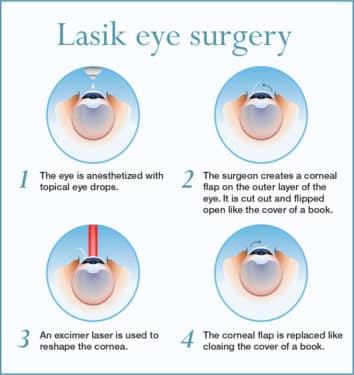Thinking Of Cataract Surgical Treatment? Examine The Benefits Of Both Standard And Laser Techniques To Determine The Necessary Variables That Will Certainly Affect Your Vision
Thinking Of Cataract Surgical Treatment? Examine The Benefits Of Both Standard And Laser Techniques To Determine The Necessary Variables That Will Certainly Affect Your Vision
Blog Article
Content By-Dalsgaard Kure
When considering the option in between standard cataract surgical procedure and laser-assisted strategies, you might find yourself considering the benefits and disadvantages each approach uses. The choice exceeds the surface area degree of cost and precision, diving right into the realm of lasting end results and patient satisfaction. As you navigate with the intricacies of these two approaches, it comes to be imperative to recognize the nuanced information that can substantially affect your visual quality and general experience. Remain tuned to uncover the critical variables that will direct your decision-making process in this important element of eye treatment.
Traditional Cataract Surgery Advantages And Disadvantages
When thinking about conventional cataract surgical treatment, you might find that it's a well-established and widely-used strategy. In this treatment, a cosmetic surgeon makes a tiny laceration in the eye and uses ultrasound to break up the cloudy lens prior to removing it. As soon as the cataract is eliminated, an artificial lens is inserted to restore clear vision.
One of the main advantages of conventional cataract surgical treatment is its performance history of success. Many clients have had their vision dramatically boosted via this treatment. In addition, standard surgery is typically covered by insurance, making it a much more available alternative for lots of individuals.
However, there are some downsides to conventional cataract surgical procedure too. Recovery time can be much longer contrasted to newer strategies, and there's a somewhat greater threat of issues such as infection or swelling. Some people may also experience astigmatism or require reading glasses post-surgery.
Laser-Assisted Techniques Benefits And Drawbacks
Checking out laser-assisted techniques for cataract surgery introduces a modern approach that makes use of laser innovation to execute crucial steps in the treatment. One of the main advantages of laser-assisted cataract surgery is its accuracy. The laser enables exceptionally exact incisions, which can lead to much better aesthetic results. Furthermore, making use of lasers can decrease the amount of ultrasound energy needed throughout the surgery, possibly reducing the danger of problems such as corneal damage.
On is cataract surgery covered by medicare , laser-assisted strategies can be more costly contrasted to typical techniques. This cost mightn't be covered by insurance, making it less accessible to some people.
One more factor to consider is that not all cataract doctors are trained in laser innovation, which could limit your options for selecting a cosmetic surgeon.
Finally, while the laser can automate specific elements of the procedure, the surgery still calls for a skilled surgeon to ensure successful outcomes.
Relative Analysis of Both Methods
For an extensive understanding of cataract surgical procedure techniques, it's necessary to perform a comparative analysis of both standard and laser-assisted methods.
Typical cataract surgical treatment entails hands-on lacerations and making use of portable tools to separate and remove the over cast lens.
On the other hand, laser-assisted cataract surgical procedure utilizes advanced technology to create specific cuts and break up the cataract with laser energy prior to removing it.
In regards to accuracy, laser-assisted techniques supply a greater level of precision compared to typical approaches. Making use of lasers enables modification of the procedure based upon each client's eye composition, potentially causing far better aesthetic results.
Nevertheless, laser-assisted cataract surgery tends to be more expensive than standard surgical procedure, which might limit access for some people.
While both approaches work in recovering vision damaged by cataracts, the choice between typical and laser-assisted strategies typically depends on elements such as price, accuracy, and specific client needs.
Consulting with your ophthalmologist can help figure out the most suitable method for your cataract surgical procedure.
Verdict
Finally, when determining in between conventional cataract surgical treatment and laser-assisted strategies, think about factors like price, precision, and individual requirements. Typical surgery provides a proven performance history and insurance coverage yet may come with longer recovery times. https://www.optometrytimes.com/view/what-happened-over-10-years -assisted methods supply higher accuracy and personalization yet can be much more expensive and not always covered by insurance coverage. Eventually, the selection in between both methods depends on what is most important to you and your specific situation.
